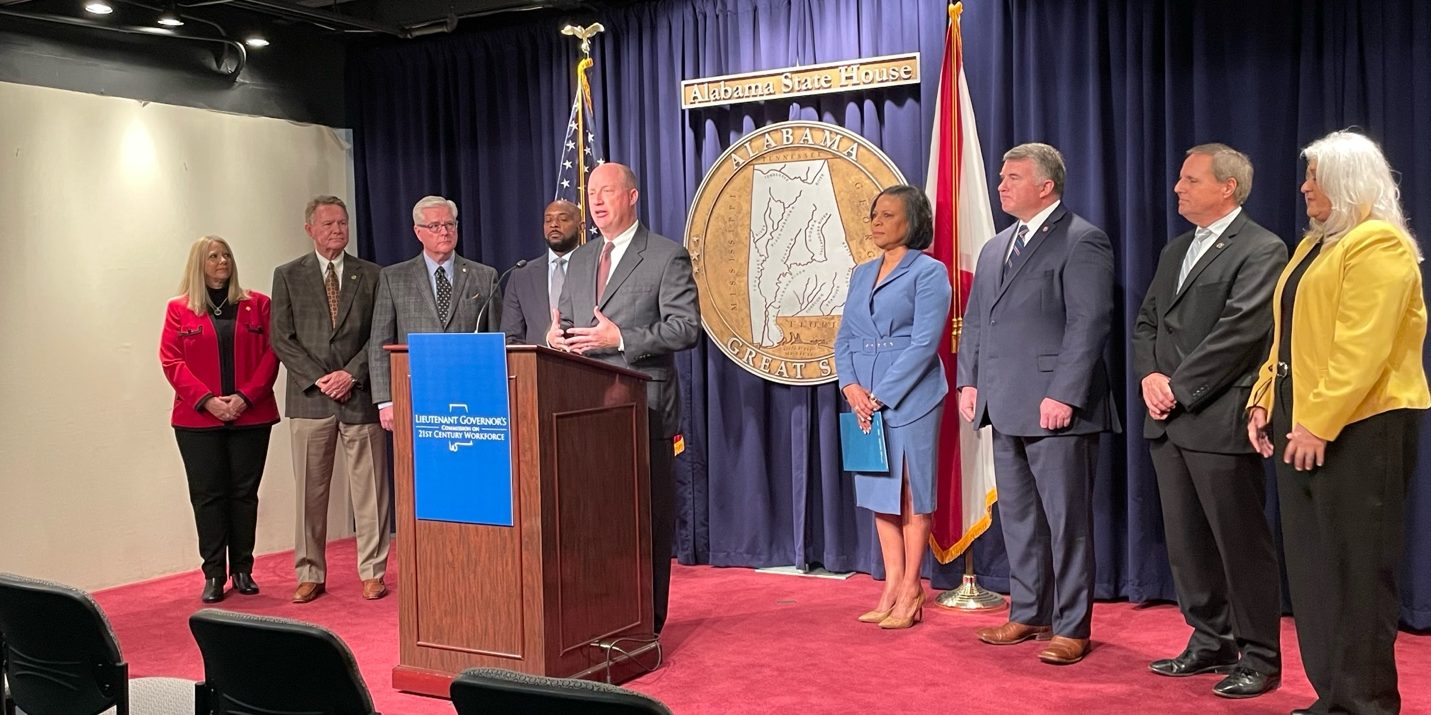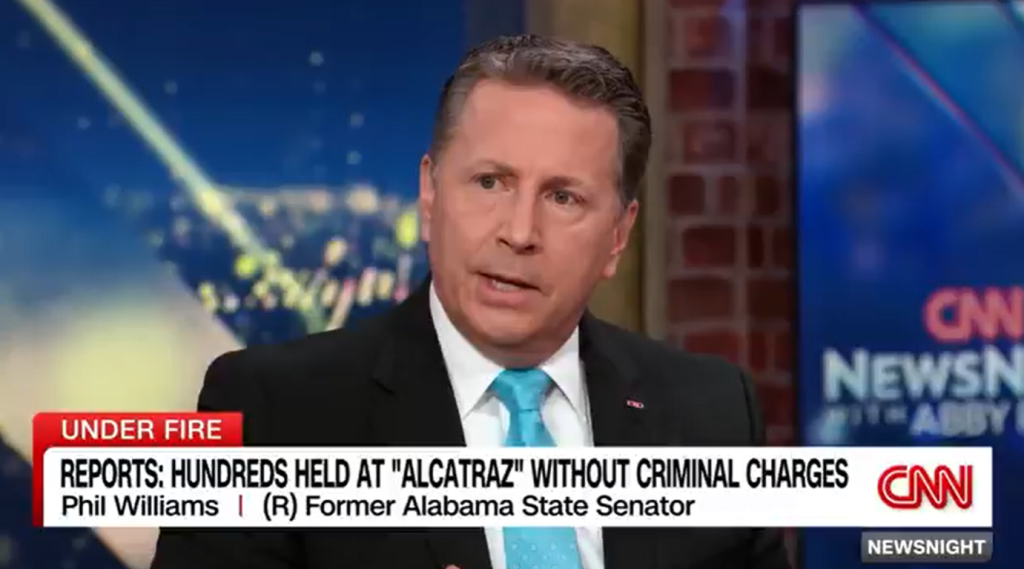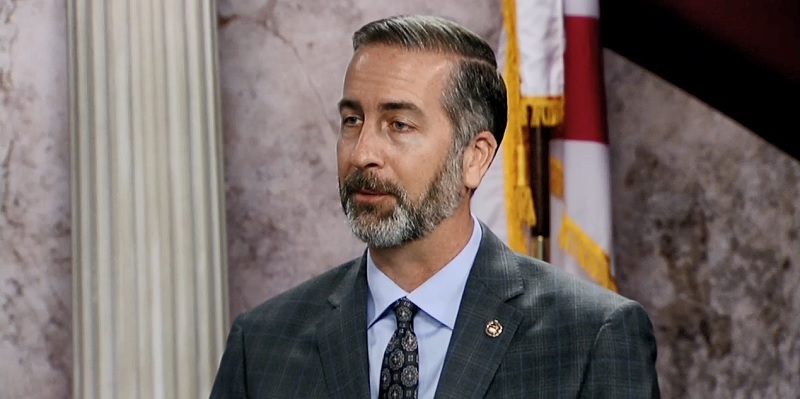A commission tasked with crafting a path to modernize Alabama’s workforce competitiveness has released what it calls a “landmark plan” — featuring a range of recommendations to reshape the state’s workforce development initiatives.
The 21st Century Work Force Commission, created by the Alabama legislature in 2019 and led by Lt. Gov. Will Ainsworth, is pushing in particular to grow the state’s economic recruitment abilities, labor force participation rate, and developing effective training and employment of Alabamians.
For the announcement of the recommendations, Ainsworth was joined by Senate Pro Tem Greg Reed, commission members Rep. Danny Garrett (R-Trussville) and Rep. Kelvin Lawrence (D-Hayneville), Business Council of Alabama President and CEO Helena Duncan, alongside other lawmakers and members of the commission.
“Alabama is the economic recruitment leader of the Southeast, but to maintain our competitive edge we need historic, transformative changes to our workforce development system,” said Ainsworth on Tuesday.
RELATED: Ainsworth envisions Alabama as ‘workforce engine of the Southeast’
“Our commission has created a plan to align our job training efforts so Alabama can seize new opportunities and connect all Alabamians with 21st century employment. With these reforms, we can make Alabama’s workforce development the envy of the nation.”
“It has been an honor to serve with such a knowledgeable and engaged group of leaders who are dedicated to improving our state,” Ainsworth said. “Our work does not end with this report but when these reforms become law and change Alabama for the better.”
Senate Pro Tem Greg Reed said that the desired development comes down to effective recruitment, training, and employment of Alabamians.
“The Lieutenant Governor and commission members can be proud of the work they’ve done,” said Reed. “We can get people off the sidelines, back into the labor force and into skilled jobs that will provide meaningful careers and family-sustaining incomes.”
RELATED: Workforce challenges being addressed by industry-community college partnership
Rep. Danny Garrett, a commission member, believes that while the Alabama economy is doing very well in some areas, in others it is performing abysmally.
“I applaud Gov. Ainsworth’s leadership and all those who served with us on the Lieutenant Governor’s commission,” said Garrett. “Alabama is witnessing record-breaking economic growth and historically low unemployment rates, but our labor force participation rate is among the worst in the nation.”
“Our workforce development system must innovate if we want to provide opportunities to more workers.”
The Lieutenant Governor’s Commission on 21st Century Workforce plan includes the following recommendations:
Merge Unaligned and Duplicative Workforce Development Agencies – Consolidate the Department of Commerce’s Workforce Development Division, AIDT and the Department of Labor into a new Alabama Workforce Authority (AWA) to be led by a Cabinet-level Secretary of Workforce Development appointed by the Governor.
Collaboration with Alabama Employers – The AWA will be governed by a nine-member board of directors who will advise the Governor and Legislature on workforce priorities and help hold state agencies accountable.
Alabama Workforce Development Plan – The AWA will develop a regularly-updated plan for how state agencies coordinate the recruiting, training and employment of Alabamians.
Accountability for Workforce Outcomes – The Alabama Workforce Development Plan will include benchmarks to measure the success of the state’s workforce-related agencies.
Workforce Pathways Diploma, Reinvest in County Career Tech Centers – Highlight the value of Career and Technical Education (CTE) by developing a diploma pathway that supports students accessing skills training during high school. Reinvest in county CTE centers to ensure students are trained for in-demand careers.
Recruitment into In-demand Jobs – Alabama should increase and centralize funding within the AWA for recruiting disconnected and underemployed individuals. AWA and its recruitment partners would connect individuals likely to reengage with the workforce with information on pathways and training for existing, in-demand jobs through targeted outreach where they live and on the media platforms they use.
Public Private Solutions to Barriers – The AWA would seek to address barriers to employment by centralizing funding for non-governmental organization that provide services to job seekers and coordinating their efforts across the Alabama workforce development system.
Ease Access to Scholarships for Military Transition – Engage state and federal leaders to remove barriers and restrictions that prevent former, active and reserve military members from best utilizing the funding they are entitled to for training that leads to meaningful careers.
Childcare Tax Credits – Develop tax credits that incentivize employers to fund childcare and incentivize childcare providers to expand access and quality. Tax credits would be made available for employers that provide on-site childcare or stipends to employees for childcare expenses.
Mental Health and Addiction Diversion Programs – Empower law enforcement, district attorneys and judges to develop or expand low-cost and no-cost programs that help individuals access treatment and recovery programs without negatively impacting their earning potential and career options.
Housing Tax Credits – The tax credit will serve as a catalyst for funding the construction and refurbishment of workforce housing units.
Austen Shipley is a staff writer for Yellowhammer News.













